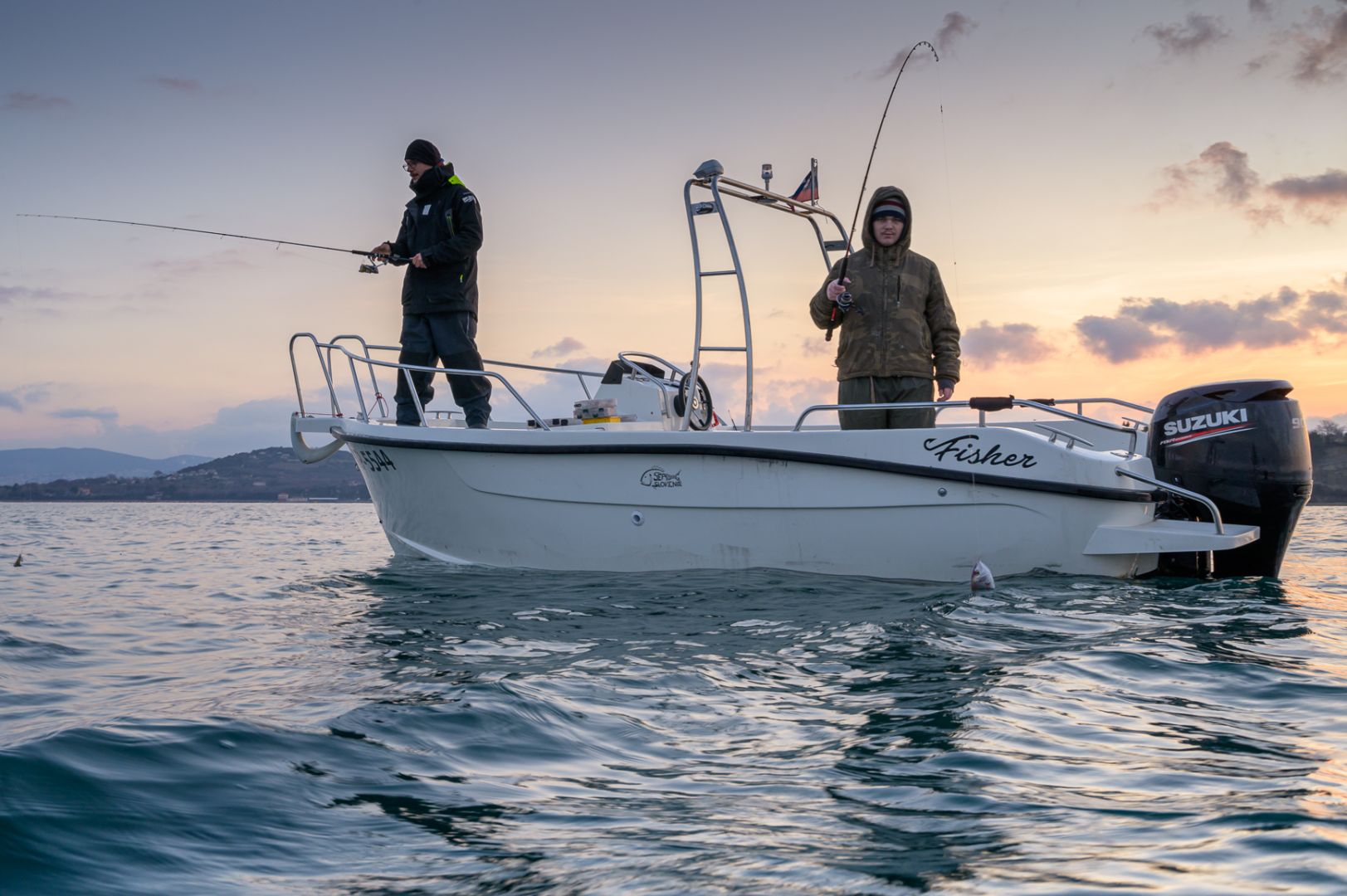Catch the best of our sea
The Slovenian coastline measures just over 40 kilometers, making it one of the shortest in Europe. Yet, there are more than enough opportunities for a good catch, as you can find a wide range of delicious fish here – mackerel, cuttlefish, squid, sea bream… Going fishing isn’t quite so simple, as you’ll also need certain permits. Check out all the handy tips about permits, fishing techniques, and of course, suggestions for some of the most popular destinations among Slovenian anglers.
Slovenian law requires that before starting fishing in the Slovenian sea, you must obtain the appropriate permit:
- Annual permit (sport fishing): Required for participation in sport fishing. You can get it by becoming a member of one of the fishing associations affiliated with the Slovenian Sea Sport Fishing Association. You can apply for it through the association.
- Weekly or daily permit (recreational fishing): Allows one-day or one-week recreational fishing. Getting this is much easier – all you have to do is order it online. The permit becomes valid about an hour after issuance, and you don’t need to print it – just save the unique code you receive on your phone.
- No permit is required for recreational shore fishing. This allows you to gain valuable experience without unnecessary bureaucracy, which is especially useful for beginners and casual weekend anglers.
- Rod fishing: one of the most commonly used fishing techniques. It involves a lead ball and sliding sinker. A fluorocarbon line is tied to the rod, with a hook at the end.
- Float fishing: a technique suitable for catching all types of fish. A float is threaded onto the line, held in place by stoppers above (and below) that control its movement and position. One end of the main line has a swivel, the other a hook.
- Lure fishing with wobblers: a specialized technique for catching sea bass and garfish. It uses a main line attached to a fluorocarbon leader, which connects to a swivel and a wobbler. The wobbler is an artificial bait shaped like a small fish, equipped with hooks.
- Spearfishing: a technique that involves the use of a speargun and diving gear. Although generally less common, it is quite popular among Slovenian fishermen.
Fishing spots map
We present to you an interactive map of the most accessible fishing spots along the Slovenian coast. One of the main advantages of fishing in this area is that it does not require a permit, meaning it is completely free. Additionally, access to the coastline is easy. Still, questions often arise about where, when, and how to fish, so the map highlights the best locations for shore fishing.
During the summer months, fishing along the entire Slovenian coast can be quite difficult due to crowds. In such conditions, night fishing proves to be an excellent alternative, offering more peace and better chances for a successful catch.
Most common catches in the Slovenian sea
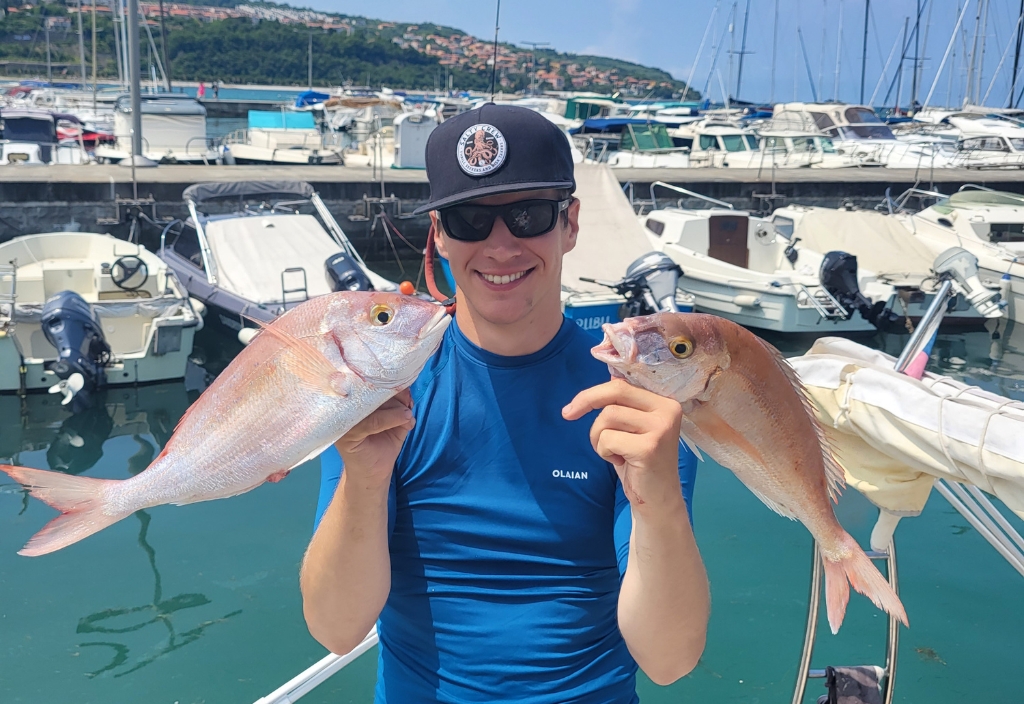
Ribon (Pandora)
Ribon is a common fish in the northern Adriatic, classified among the sparidae family. It is recognizable by its distinctive reddish color. The best time to fish for it is late autumn and winter. It is caught from an anchored boat using sensitive rods and natural baits such as shellfish, marine worms, and crustaceans. Artificial lures like inchiku and kabura are also effective.
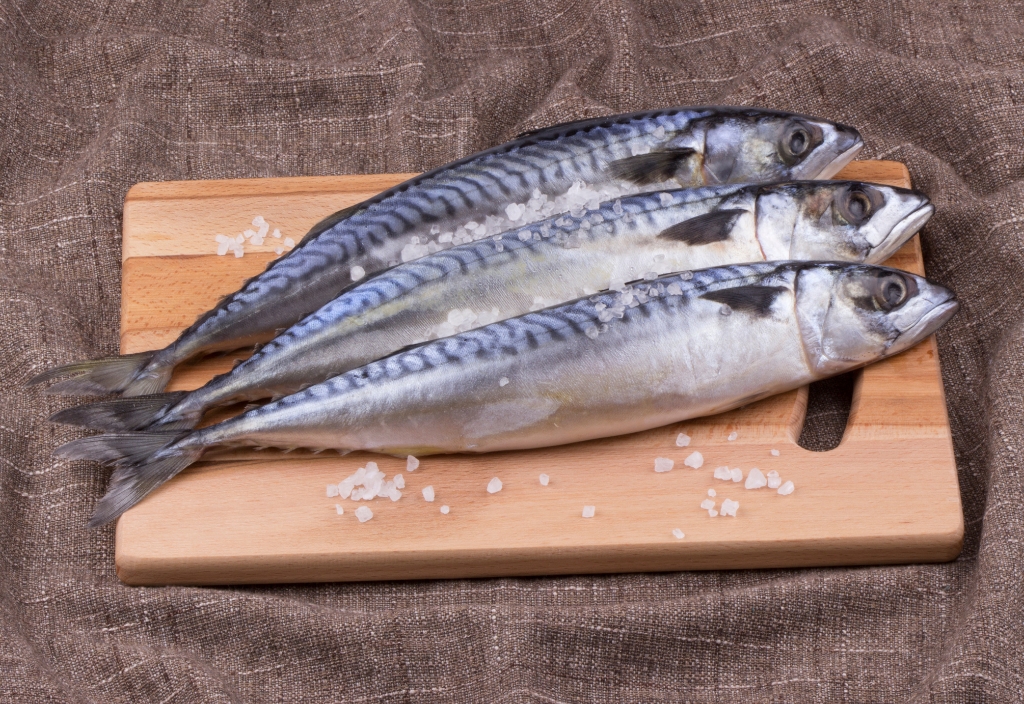
Mackerel (Scomber)
The mackerel is a fighting fish that arrives in the Adriatic during the summer and stays until late autumn. It moves in schools, making for exciting fishing. It is caught using natural baits like sardines and squid, as well as artificial ones like sabiki rigs and jigs. Despite its smaller size, it is a remarkably strong fish that often surprises even experienced anglers.
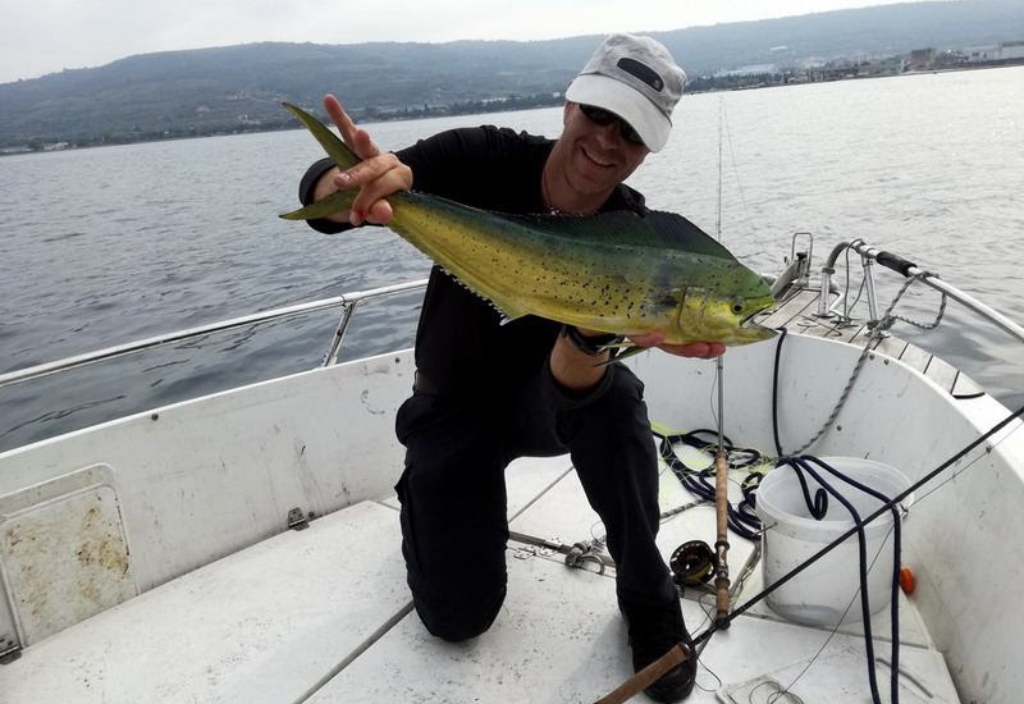
Lampuga
The lampuga, also known as dolphinfish or golden mackerel, is increasingly common in the Adriatic, though rarely targeted by anglers. It has a distinct elongated body, golden-green color, and light spots. It mostly swims in open waters and is a fast, agile predator. In the Adriatic, it can grow up to 1 meter in length and weigh up to 5 kg. The best time to catch it is autumn, when it comes closer to the shore. It is highly valued in cuisine for its tasty flesh.
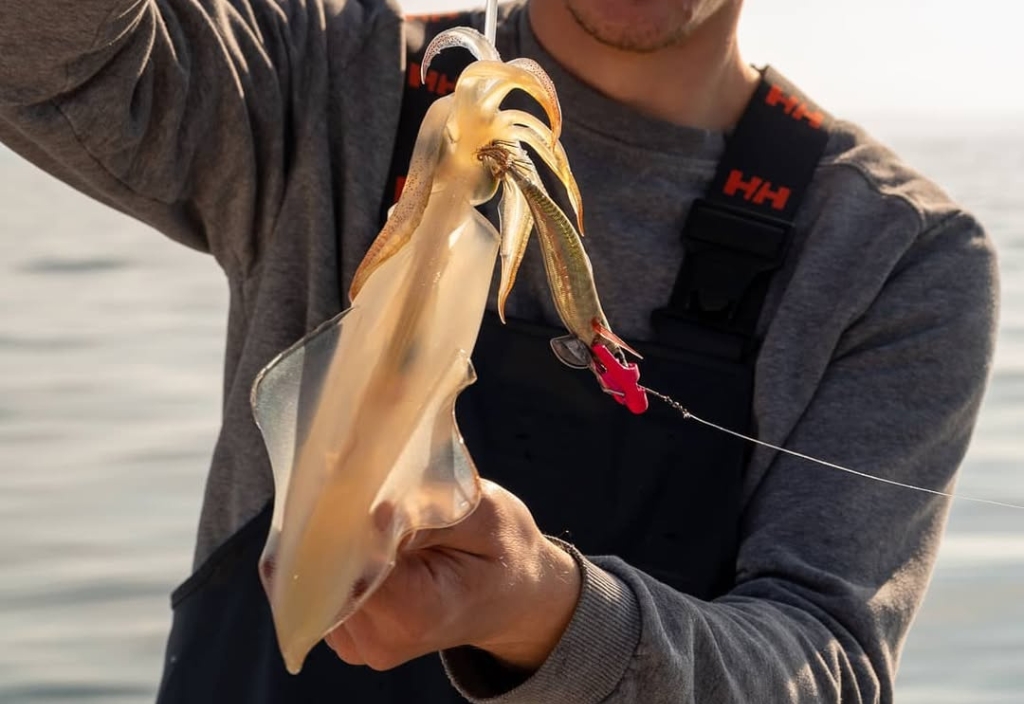
Cuttlefish and Squid
Cuttlefish and squid appear in the Slovenian sea during autumn, when they can be successfully caught even from the shore. The most effective technique is spinning (eging) with special lures – called “egi.” Softer rods and thin braided lines provide better lure control. These catches are popular in the kitchen, especially for risottos and fried dishes, as they have a stronger flavor than squid alone.
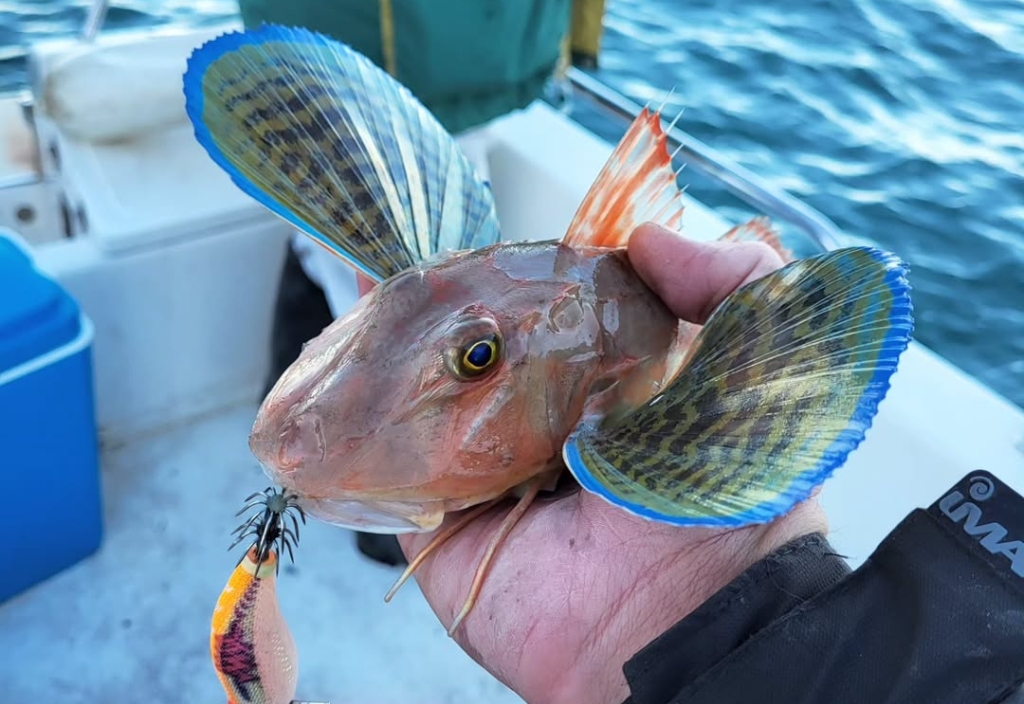
Tub Gurnard
The tub gurnard, also known as “kokot” in Slovene, is a fish with a distinctive red color, a hard head, and large blue pectoral fins. It often moves in pairs and swims long distances. It can be caught year-round, most commonly in autumn. It is fished from a boat on the bottom using stronger rods. Effective baits include live salt marsh shrimp, sardines, or artificial lures such as small soft plastics and sabiki rigs.
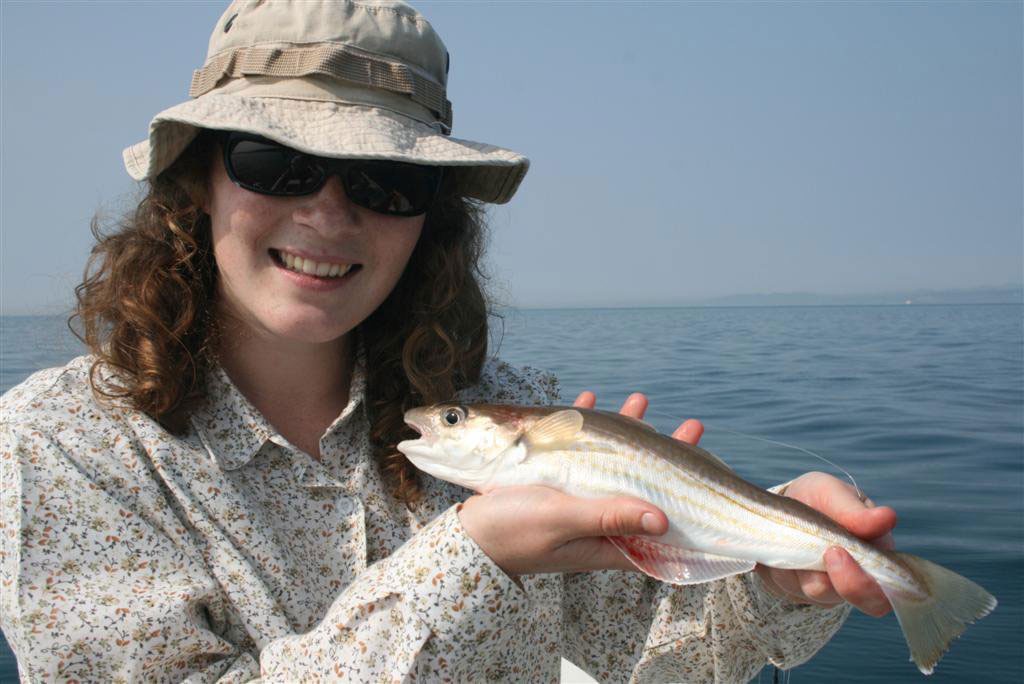
Forkbeard (Molva)
The forkbeard belongs to the cod family and has an elongated body covered in mucus. It stays near the seabed in small schools and is extremely voracious. It enters the Gulf of Trieste in late autumn and remains until summer. It is fished from a boat on the bottom using stiffer rods; the most effective baits are sardines and squid strips. Due to its delicate flesh, it is best stored on ice immediately after catching.
Are you ready for a new adventure?
Embark on a themed fishing trip with experienced fisherman Peter!
